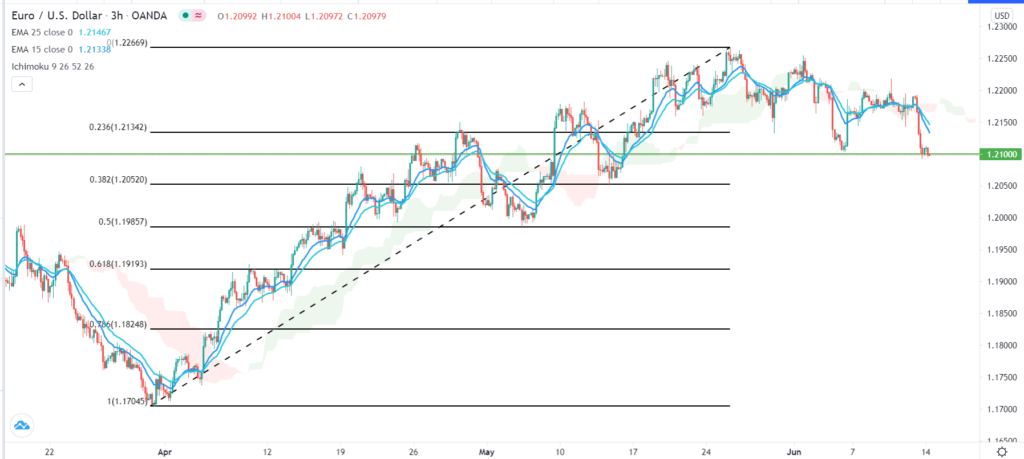
The EUR/USD is hovering near its lowest level in a month as investors reflect on the recent interest rate decision by the European Central Bank (ECB). They are also waiting for important economic data from the United States and the Federal Reserve decision. The pair declined to 1.2100, which was 1.37% below the highest level in May.
ECB and US retail sales data
The ECB concluded its monetary policy meeting and delivered its verdict on the economy last week. The bank did what most analysts were expecting – left the interest rates and the pandemic emergency purchases program (PEPP) unchanged. The only change to the policy was that the bank would accelerate the asset purchases in the coming months as it continues to support the economy.
With the ECB’s verdict out, focus shifts to the Federal Reserve, which will start its monetary policy on Wednesday and publish its decision on Thursday. The decision will come a day after the US publishes the latest retail sales and the producer price index (PPI) data.
Analysts expect the data to show that the overall retail sales eased a bit in May as the prices of most items rose. Sales are important numbers since consumer spending is the biggest contributor to the US GDP.
At the same time, they see the PPI rising from 6.2% in April to 6.3% in May this year. Still, judging by the recent consumer price index (CPI), there is a possibility that the PPI will be significantly bigger than that. Data showed that the headline CPI rose by 5% in May while core CPI rose to the highest rate since 1992.
Federal Reserve decision
The EUR/USD will likely see some volatility ahead and after the Fed decision. Analysts expect that the Fed will leave interest rates unchanged, where they have been in the past few months. They also expect the bank to continue with its asset purchases. The $120 billion monthly purchases have pushed the bank’s balance sheet to more than $7.9 trillion, which is substantially higher than where it was a year ago.
Still, analysts and investors will be looking for one key phrase in the monetary policy statement – transitory. In the past few meetings, the bank has said that the current strength of the economy was transitory, meaning that the numbers will start to ease as the country reopens.
Therefore, if the Fed changes tune and becomes hawkish, there is a possibility that the EUR/USD will continue with its current bearish trend. On the other hand, if it maintains its policy and forward guidance, the EUR/USD will also rise. This is simply because some analysts have started pricing in a situation where the ECB moves ahead of the Fed.
In addition to the Fed decision, the EUR/USD pair will react to the latest US housing starts, and building permits data that will be published this week.
EUR/USD technical analysis
The three-hour chart shows that a bearish trend has been emerging lately. For one, the pair seems to have been forming a head and shoulders pattern, which is usually a bearish signal. The pair has also dropped below the 23.6% Fibonacci retracement level, while the 50-day and 25-day Exponential Moving Averages (EMA) have formed a bearish crossover.

Further, the pair has moved below the Ichimoku cloud, which is usually a bearish signal. Therefore, the pair will likely keep falling ahead of the FOMC decision. If this happens, the next key support levels to watch will be the 38.2% and 50% Fibonacci retracement levels at 1.2052 and 1.1985, respectively.








Leave a Reply